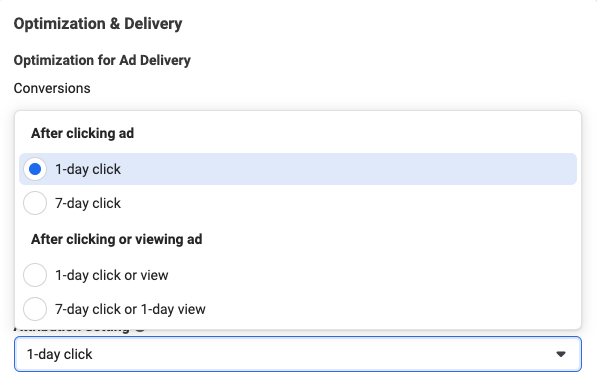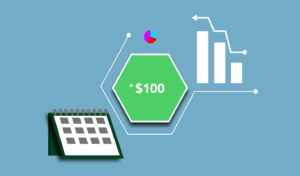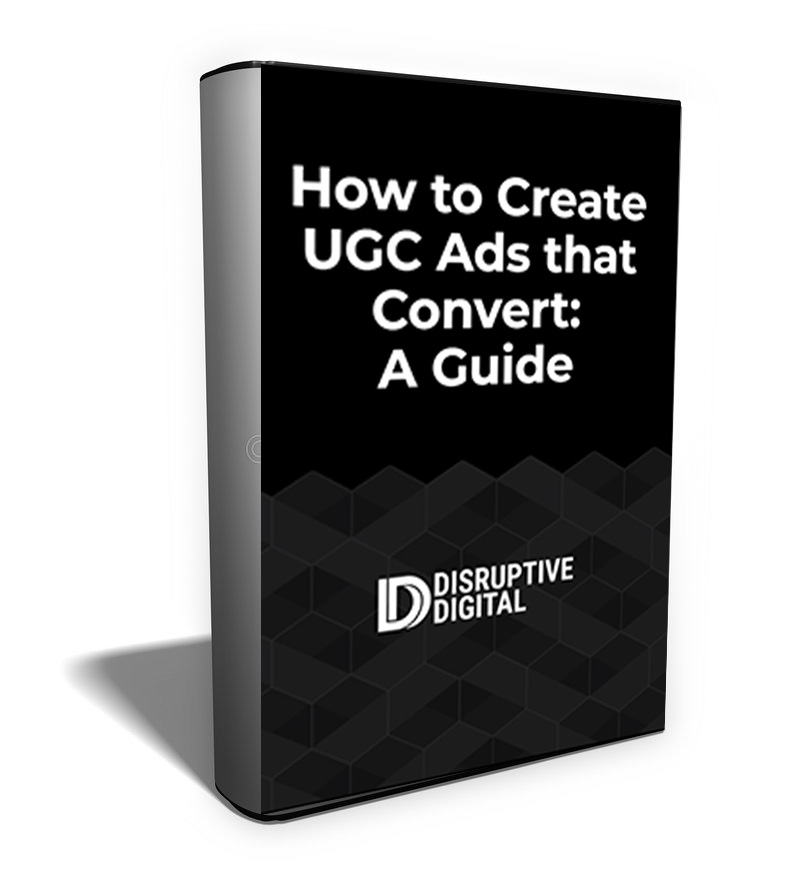Plenty of advertisers think that 1-day click data is the holy grail of Facebook metrics, even if they relied on a more-lenient 1-day view and 28-day click model.
While this might seem like a good conservative approach to running ads, strategies centered around 1-day click data can backfire terribly if it isn’t understood, especially with the new iOS 14 update rolling out soon.
In this post, we’re going to take a close look at all the reasons why 1-day click data can be misleading both with the iOS 14 update and outside of it, and what you should be looking at instead.
Why This Won’t Work Post-Apple’s iOS 14.5 Update
The most significant reason why 1-day click data won’t be effected post-iOS14 rollout is simple: 1-day click data might not come through within 1 day.
The reality is that as it stands now, iOS’s SKAdNetwork API and Private Click Measurement (PCM) framework will not support real-time reporting, which can be delayed up to 3 days. If you’re relying exclusively on 1-day data and it doesn’t come in on day one as expected, you’re seeing results coming in only as they’re reported to Facebook and not as they’re actually occurring.
Why 1-Day Click Data is Misleading Even Outside of iOS
Even outside of what’s happening with the iOS 14 changes, it’s important to note that 1-day click data has always had the potential to be misleading.
Facebook’s bidding system isn’t always reliant on a 1-day click basis unless you’re seeing the vast majority of your sales happening within one day after clicking on the ad. If you’re seeing a larger number of sales come in outside a 1-day window, there will be a lot more volatility on a daily basis; however, you’ll see more stability within the full 7 days,
Many products, after all, take longer than a single day to purchase, and Facebook’s bidding was designed to take that into consideration.
To account for this, Facebook can look at the full 7-day click and 1-day view bidding windows to find customers who align with the purchase behavior that you’re optimizing for.
If you’ve got view-based bidding enabled, therefore, you may end up seeing Facebook bidding more on view-based conversions if they think it’s the best way for you to get results.
That being said: If you have an impulse-buy product, Facebook will be more likely to bid within a 1-day click window even if you’ve allowed more lenient options.
Why You Might Not Want to Measure 1-Day Data: A Case Study
It’s easy to talk in theoreticals when we’re talking about ad systems as complex as bidding windows, but this case study can really exemplify the importance of not relying on 1-day click data.
This is the CPA data of a prospecting ad set (i.e. targeting people who don’t know the brand) that we ran for a brand who has a high average order value and a longer purchase consideration cycle. You can see that the one-day click CPA was significantly more volatile than the full bid window of 7 days. There was a great deal more stability with the full bid window Facebook was set to optimize for.
For reference: This ad set ran with a bid cap, and needed 50+ conversions to get out of the learning phase.

If we had only relied on 1-day click CPA data, things might have started to be a little nerve-wracking to say the least on days 4, 7, 9, 11, 13, 18, and 21. Huge spikes can be alarming.
When, however, you’re looking at the full 7-day click window, you’re getting a more holistic view and understanding of what’s actually happening with those campaigns. The CPAs reduced drastically on five out of those seven days when full latency was accounted for.
While the average 1-day click CPA was 26% higher than the full-bid window, the range varied anywhere from 0-150%. Those are significant swings, and it makes it harder to accurately assess your campaigns.

Some accounts are able to see less volatility in a 1-day click window, especially those that are often impulse-buy products. That being said, many brands have longer purchase consideration cycles, and that needs to be taken into account or it can impact performance.
What You Should Bid On & Measure Instead
The 7-day click bidding mechanism was designed entirely for advertisers who can’t drive impulse buys predictably. It only makes sense to take advantage of it if it can benefit you.
Keep in mind that Facebook believes it can drive a large percentage of single-day purchases, so it will try to do so even within a 7-day click bid window. The full window gives Facebook more flexibility to find buyers in those seven days; it does not limit the pool to people who will actually take that long.
Because of this, we’ve found that it typically makes the most sense to bid with the full 7-day click and 1-day view bidding window. This opens the door for Facebook to reach as many people as possible without putting artificial limitations in place that could hinder your campaigns.
The only times we really recommend considering bidding on stricter windows is when a specific situation warrants it, such as the following:
- You need to remove false positives so Facebook doesn’t optimize for people who would convert anyways
- Setting stricter bids due to limited time offers
- Adjusting for the attribution model
And as the iOS 14 rolls out, 7-day click data will be seen partially compared to how it’s perceived today, where you have a full window. If, for example, you saw 10 7-day click-to-conversions reported, you may only see five when iOS rolls out due to the impact on reporting.
Only the 1-day click-through data will be modeled to estimate conversions from iOS14 users. The new 7-day click-through will be based on partial data and not modeled. Facebook may explore options to model the data in the future, but there’s no concrete plan as of yet.
In order to account for this, we recommend starting to look at your revenue in your backend system for new customers vs ad spend in-platform (as opposed to in-platform revenue vs in-platform ad spend). You can also use post-purchase surveys to get more information from users about when they first discovered your brand and how.
Switching to 1-day click optimization may work better if you need more accurate data to make decisions, but it may impact your performance if you’re better off having a longer bid window and longer purchase consideration cycles.
Final Thoughts
There’s no single, sweeping correct answer for the best bidding options for all brands who want to advertise on Facebook. Some businesses can excel with a 1-day click window, while others see high amounts of volatility and unpredictability.
As always, split testing is an excellent choice to see what makes more sense for your brand. In other words, run two different campaigns testing 1-day click vs. 7-day clicks and see what works better for your business.
And remember that as the iOS 14 update rolls out, there’s a good chance that your campaign data may be impacted. This, in turn, can impact optimization, too. Watch your campaigns closely, and reach out to us if you need assistance adapting your campaigns and scaling accordingly.
Looking for help optimizing and scaling your paid social campaigns? Get in touch with us here.






